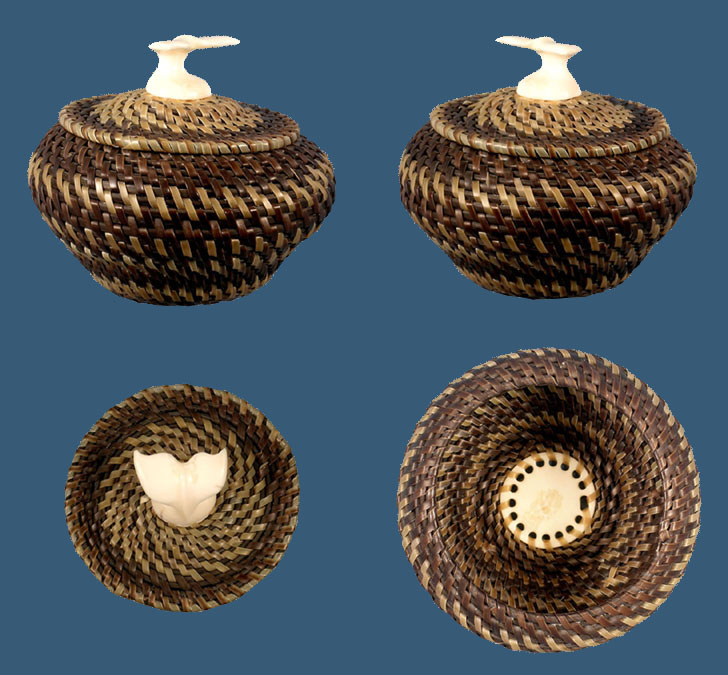This multi-colored baleen basket, crafted by Inupiaq artist Elmer Frankson from Point Hope, AK, showcases traditional artistry and cultural heritage. Standing at 4 inches high, including the whale fluke ivory finial, and measuring 3.5 inches in diameter, this basket features a striking blend of light and dark colored baleen. Elmer signed the base of the ivory starter piece with his native name “Ekayuke.” Priced at $775, this unique piece testifies to Elmer’s skill and the rich Inupiaq cultural tradition.
For more than half a century, Alaskan Inupiaq Eskimos have crafted baskets from baleen, the keratinous substance from the mouths of plankton-eating whales. While never as widespread as ivory carving, baleen basket making has significantly contributed to the livelihood of its weavers in the arctic villages of Point Barrow, Point Hope, and Wainwright, Alaska. To learn more about baleen basketry, you can visit this link.
Furthermore, serious collectors of Alaskan Native art often seek baleen baskets. Present-day weavers create beautifully shaped, finely woven baskets with multicolored baleen. For additional information on Alaskan ivory carvings, you can explore this resource. Typically, weavers start the bottom of the round baskets with an ivory disc, which has holes around its periphery. Additionally, the top (lid) of the basket also features an ivory round with holes and a figure (finial) on top. Common finial figures today include the whale fluke, seals, walrus, and bears.
The Inupiaq people originated from the King Islands but now live on mainland Alaska. Due to a tuberculosis outbreak during World War II, the closing of the school, and other factors, off-island economies lured families from King Island. Consequently, most families relocated in the 1970s. To read more about Inupiaq relocation, you can visit this link. Many Inupiaq now reside near Nome, Alaska, where they continue to make baleen baskets.
Finally, whales and walruses are essential nutritional and cultural marine resources for Alaska Natives. They use the meat, blubber, skin, and organs as a healthy and rich food source. Additionally, they process the hides to cover boats and use the tusks to create ivory walrus carvings, which they sell to collectors to provide income.

Elmer Frankson “Ekayuke” Inupiaq
Baleen basket
Baleen and ivory –
$775

